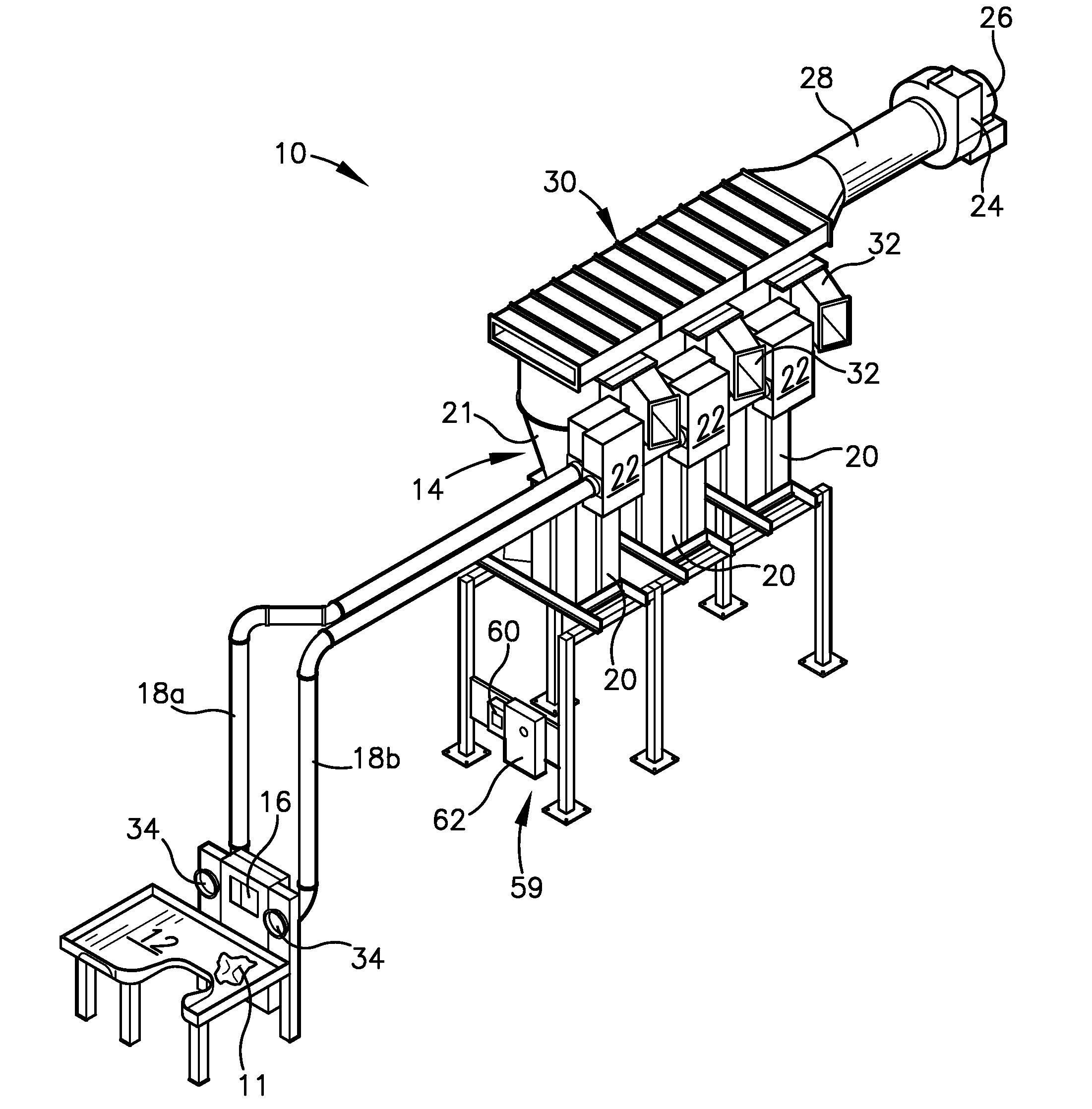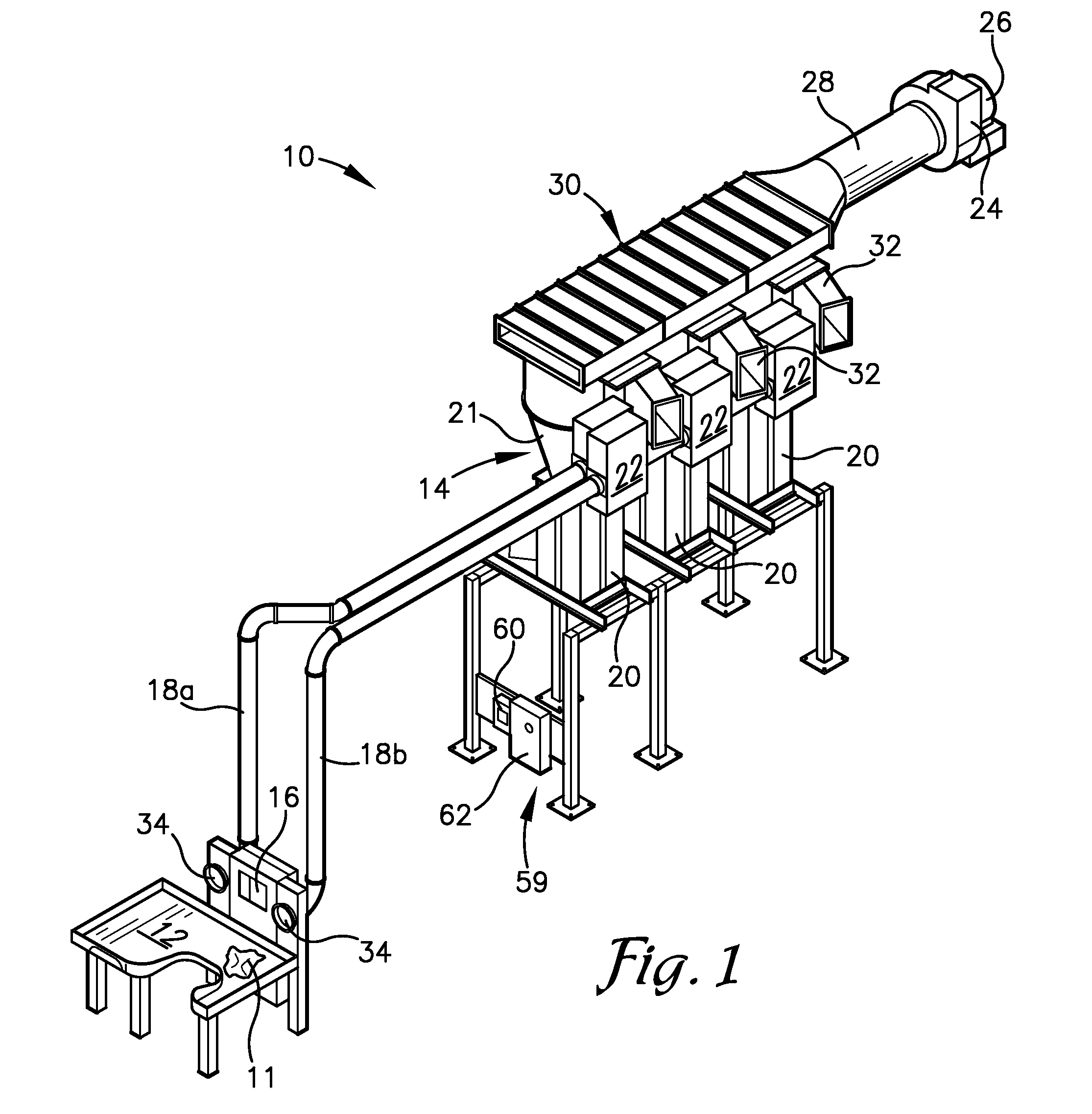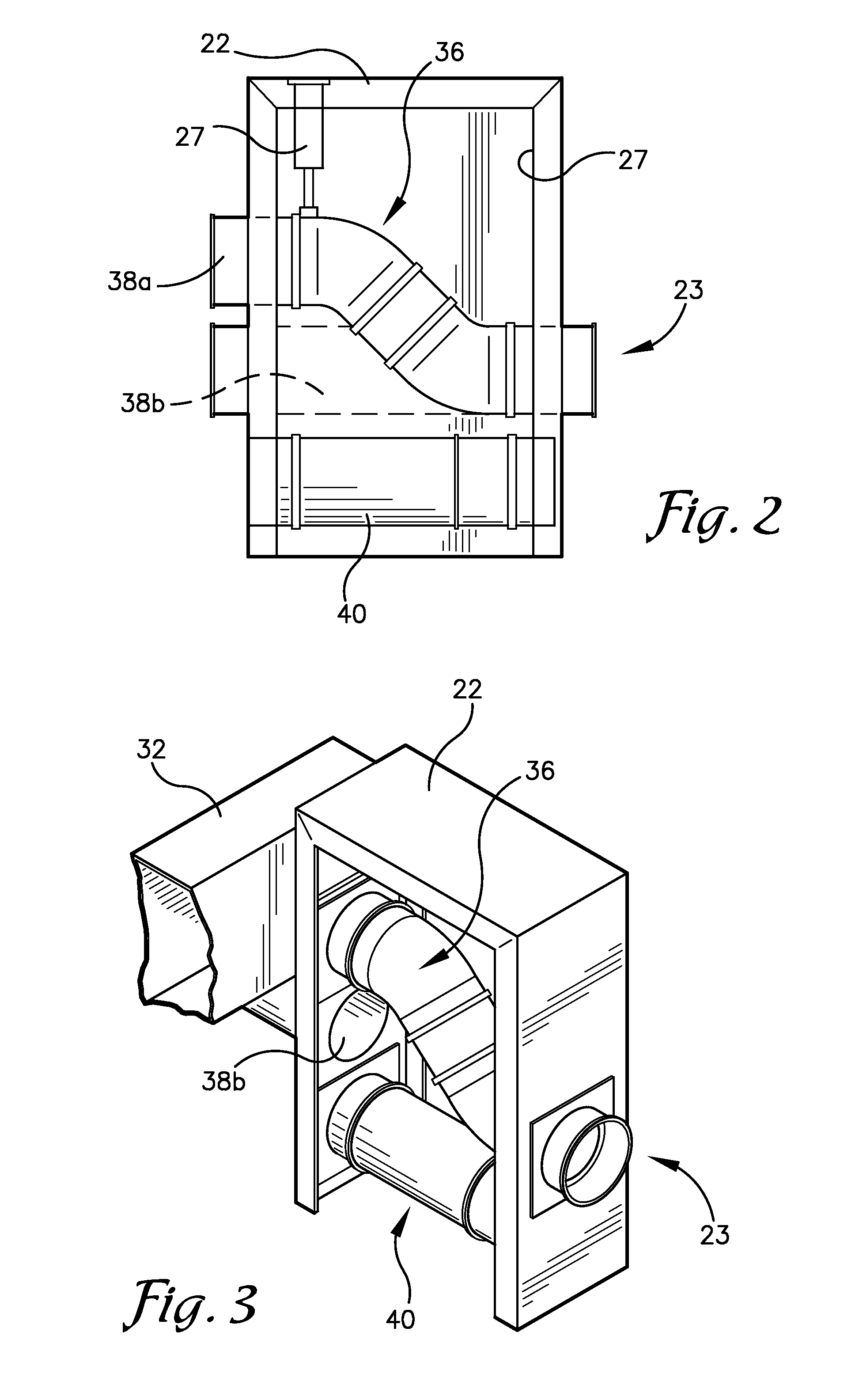Apparatus for textile counting, sorting and classifying system
a technology for textile counting and classification systems, applied in the field of textile sorting machines, can solve the problems of increasing power requirements, and achieve the effect of reducing the suction requiremen
- Summary
- Abstract
- Description
- Claims
- Application Information
AI Technical Summary
Benefits of technology
Problems solved by technology
Method used
Image
Examples
Embodiment Construction
[0032]As required, detailed embodiments of the present inventions are disclosed herein; however, it is to be understood that the disclosed embodiments are merely exemplary of the invention, which may be embodied in various forms. Therefore, specific structural and functional details disclosed herein are not to be interpreted as limiting, but merely as a basis for the claims and as a representative basis for teaching one skilled in the art to variously employ the present invention in virtually any appropriately detailed structure.
[0033]First referring to FIG. 1, a perspective top and right side view of the overall apparatus 10 is shown. The structure of the apparatus 10 will now be described in the sequence that a textile article or workpiece 11 would take in passing through the apparatus 10. The soiled textile is first deposited onto a soil counting table or work table 12 where an operator sorts the workpiece from other textile workpieces and determines which sorting bin 14 the part...
PUM
 Login to View More
Login to View More Abstract
Description
Claims
Application Information
 Login to View More
Login to View More - R&D
- Intellectual Property
- Life Sciences
- Materials
- Tech Scout
- Unparalleled Data Quality
- Higher Quality Content
- 60% Fewer Hallucinations
Browse by: Latest US Patents, China's latest patents, Technical Efficacy Thesaurus, Application Domain, Technology Topic, Popular Technical Reports.
© 2025 PatSnap. All rights reserved.Legal|Privacy policy|Modern Slavery Act Transparency Statement|Sitemap|About US| Contact US: help@patsnap.com



